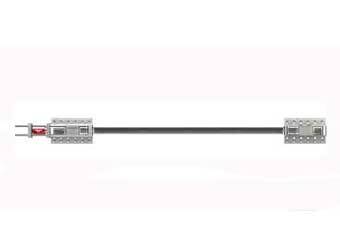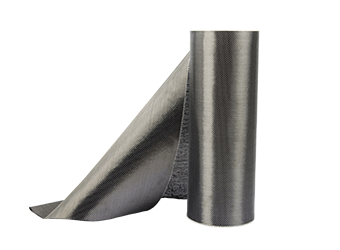Solutions
Horse Construction offers full range of structural strengthening materials with technical supports, documentation supports, products supports, project supports.
The past and present of carbon fiber reinforced materials!
To say that carbon materials everyone will definitely think of coal, but there is more than one type of carbon material family. From graphite to diamond, from carbon fiber to carbon nanotube, from fullerene to graphene, the carbon material family can be described as colorful, and carbon materials are used in all walks of life. Carbon materials are the earliest elements used by mankind. The use of carbon materials by mankind is accompanied by the development of the history of human civilization. In this article, we review the past and present life of carbon materials.
The Chinese were the first to use carbon materials. Judging from literature and archaeological excavations, coal was used in the Han Dynasty at the latest. "Hanshu. "Geography" said: "Yuzhang County has a stone, which can be burned as a salary." Yuzhang County is located near Nanchang, Jiangxi Province. The combustible stone mentioned here is actually coal. It can be seen that coal has been used in the daily life of the masses. The industrial revolution in the 18th century opened the era of coal as an industrial fuel. To this day, coal is also an important energy source for us, and coal power generation in the country accounts for 80% of the total power generation.
Another form of carbon material is diamond. India was the first country to discover diamonds. 3000 years ago, India was the only place where diamonds were produced.
At present, South Africa has the largest and most modern Venetia diamond mine in the world.
Although the use of carbon materials by humans is very early, the real understanding of carbon materials by humans has been in the last 200-300 years. In 1722, Rene Rymour discovered that iron would absorb a substance during its conversion into steel, and today people know that this is carbon. In 1772, Anton Van Lavasi proved that diamonds are composed entirely of carbon. He burned charcoal and diamonds and found that neither produced water, and the carbon dioxide formed was of the same quality. It was thought that graphite is a form of lead, but Karl William Scheler proved in 1779 that it is the same as charcoal, but mixed with a small amount of iron, and will release carbon dioxide after being oxidized by nitric acid. In 1786, the methods used by French scientists Claude Betole, Gaspar Monge, and Char Augustine Van der Monde Elavatse on diamonds proved that graphite is also mainly composed of carbon. Graphite also leaves iron after burning, so they think iron is necessary in the graphite structure.Lavoisier listed carbon as a chemical element in his 1789 textbook. In 1985, scientists discovered a new carbon elemental fullerene, including buckyballs, carbon nanotubes and so on. The discoverers Robert Cole, Harold Croto and Richard Smalley won the 1996 Nobel Prize in Chemistry.
As early as 1860, the Englishman Joseph Swan had begun to use carbon filament as the filament material. But poor Swan failed to solve the vacuum problem of the bulb, so that the carbon wire would oxidize in an oxygen environment when it glowed, and the bulb was too short. A year later, Edison solved the carbon wire problem and also solved the vacuum problem, and applied for a patent. The light bulb was on for 45 hours and was later replaced by tungsten wire.
In 1965, Japanese Otani Sushiro invented pitch-based carbon fiber and began commercialization in 1970.
In 1972, the US Hercules company began to produce PAN-based carbon fiber carbon fiber used in Japan to make fishing rods, the United States uses carbon fiber to make golf clubs
In 1973, Japan Toho Rayon Co., Ltd. started to produce PAN-based carbon fiber (0.5 tons/month). Toray Japan expanded its production capacity by 5 tons/month
In 1974, carbon fiber fishing rods and golf clubs developed rapidly. Toray Japan expanded its production by 13 tons/month
In 1975, the commercialization of carbon fiber tennis rackets UCC Corporation of the United States announced the use of mesophase pitch to manufacture high-modulus pitch-based carbon fiber "Thornel-P" UCC commercialized high-performance pitch-based carbon fiber
In 1976, Toho Rayon Co., Ltd. entered into a technical cooperation with Celanese of the United States. Sumitomo Chemical established a joint company with Hercules of the United States.
In 1979, Japan Carbon Corporation and Asahi Kasei Industrial Corporation established Asahi Carbon Fiber Co., Ltd.
In 1980, the United States Boeing Company proposed the need for high-strength, large-elongation carbon fiber
In 1981, Taiwan Formosa Plastics set up a carbon fiber research center, and Japan’s Mitsubishi Rayon Co., Ltd. and the American Hitco Company conducted technical cooperation.
In 1984, Taiwan Formosa Plastics Co., Ltd. and the United States Hitco Company carried out technical cooperation, Japan Toray Company successfully developed high-strength carbon fiber T800, the strength reached 5510MPa.
In 1986, Japan Toray Corporation successfully developed high-strength carbon fiber T1000 with a strength of 7020MPa.
In 1989, Japan Toray Company successfully developed high-mode medium-strength carbon fiber M60
In 1992, Toray Corporation of Japan successfully developed high-mode medium-strength carbon fiber M70J, and the Young's touch amount reached 690 GPa.
China has been developing carbon fiber since the late 1960s and has a history of more than 30 years. In 1976, the first PAN-based carbon fiber expansion test production line was built at the Shanxi Coal Chemistry Research Institute of the Chinese Academy of Sciences. The product performance basically reached the T200 of Toray Japan. It is also called high-strength type I carbon fiber in China.
Since 2000, my country's carbon fiber has diversified into technology. It has abandoned the original nitrate method and used the one-step wet spinning technology with dimethyl sulfoxide as the solvent to achieve success. At present, a few domestic carbon fiber products developed with independent technologies have reached the international level of similar products.
According to the forecast of relevant departments, the world's carbon fiber demand will grow rapidly at a rate of about 13% every year. In 2010, the global demand for PAN-based carbon fiber will reach 50,000 tons, and it will reach 60,000 tons in 2012. It is expected that the demand will reach 100,000 tons in 2018.
You can find anything here you are in need of, have a trust trying on these products, you will find the big difference after that.

High strength carbon fiber reinforced polymer (CFRP) strip / laminate / plate for structural strengthening and concrete repair

Prestressed carbon fiber reinforced polymer(CFRP) plate for slab, beam strengthening to increase stiffness, reduce distortion and deflection of members, reduce the cracks, avoid and stop cracking.

High strength, unidirectional carbon fiber fabric pre-saturated to form a carbon fiber reinforced polymer (CFRP) fabric used to strengthen structural concrete elements.